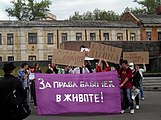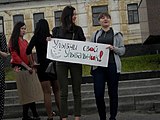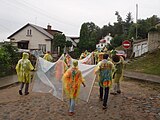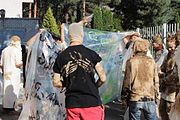
The Trans-Siberian Railway, historically known as the Great Siberian Route and often shortened to Transsib, is a large railway system that connects European Russia to the Russian Far East. Spanning a length of over 9,289 kilometers, it is the longest railway line in the world. It runs from the city of Moscow in the west to the city of Vladivostok in the east.

Novosibirsk is the largest city and administrative centre of Novosibirsk Oblast and the Siberian Federal District in Russia. As of the 2021 Census, it had a population of 1,633,595, making it the most populous city in Siberia and the third-most populous city in Russia after Moscow and Saint Petersburg. The city is located in southwestern Siberia, on the banks of the Ob River.

Tomsk is a city and the administrative center of Tomsk Oblast in Russia, located on the Tom River. Population: 556,478 (2021 Census); 524,669 (2010 Census); 487,838 (2002 Census); 501,963 (1989 Census).

Krasnoyarsk is the largest city and administrative center of Krasnoyarsk Krai, Russia. It is situated along the Yenisey River, and is the second-largest city in Siberia after Novosibirsk, with a population of over 1.1 million. Krasnoyarsk is an important junction of the renowned Trans-Siberian Railway, and is one of the largest producers of aluminium in the country. The city is known for its natural landscape; author Anton Chekhov judged Krasnoyarsk to be the most beautiful city in Siberia. The Stolby Nature Sanctuary is located 10 km south of the city. Krasnoyarsk is a major educational centre in Siberia, and hosts the Siberian Federal University. In 2019, Krasnoyarsk was the host city of the 2019 Winter Universiade, the third hosted in Russia.

The early history of Siberia was greatly influenced by the sophisticated nomadic civilizations of the Scythians (Pazyryk) on the west of the Ural Mountains and Xiongnu (Noin-Ula) on the east of the Urals, both flourishing before the common era. The steppes of Siberia were occupied by a succession of nomadic peoples, including the Khitan people, various Turkic peoples, and the Mongol Empire. In the Late Middle Ages, Tibetan Buddhism spread into the areas south of Lake Baikal.

Prof Sergei Lvovich Sobolev FRSE was a Soviet mathematician working in mathematical analysis and partial differential equations.

Novosibirsk Tolmachevo Airport is situated in the town of Ob, 16 kilometres (9.9 mi) west of the center of Novosibirsk, an industrial and scientific center in Siberia and Russia's third-largest city.

The Russian march is an annual demonstration conducted by Russian nationalist organizations in major Russian cities. They are usually conducted on 4 November, the Day of National Unity in Russia.

Siberian regionalism is a political movement that advocates for the formation of an autonomous Siberian state. The idea originated in the mid-19th century and reached a high tide with the White movement military activities of Aleksandr Kolchak (1874–1920) and Viktor Pepelyayev (1885–1920) during the Russian Civil War of 1917–1922.
Lenta.ru is a Russian-language online newspaper. Based in Moscow, it is owned by Rambler Media Group. In 2013, the Alexander Mamut-owned companies "SUP Media" and "Rambler-Afisha" merged to form "Afisha.Rambler.SUP", which owns Lenta.ru. The online newspaper is one of the most popular Russian language online resources with over 600 thousand visitors daily.

Nikolai Mikhailovich Yadrintsev was a Russian public figure, explorer, archaeologist, and Turkologist. His discoveries include the Orkhon script, Genghis Khan's capital, Karakorum and Ordu-Baliq, the capital of the Uyghur Khaganate. He was also one of the founding figures of Siberian regionalism.

A Siberian Republic is an idea of making Siberia an independent republic.
The Shigir Sculpture, or Shigir Idol, is the oldest known wooden sculpture. It was carved during the Mesolithic period, shortly after the end of the last Ice Age, and is twice as old as Egypt's Great Pyramid. The wood it was carved from is approximately 12,000 years old.

Siberian Baroque is an architectural style common for ambitious structures in 18th-century Siberia, where 115 stone churches in Siberia were recorded in 1803, most of which were built in this provincial variant of the Russian Baroque, influenced by the Ukrainian Baroque and in some cases even incorporating lamaist motifs. Most of the buildings were preserved in Irkutsk, Tobolsk and Tomsk. An original interior of a Siberian Baroque structure survives only in the Feast of the Cross Church in Irkutsk.
Hetzner Online GmbH is a company and data center operator based in Gunzenhausen, Bavaria, in Germany.
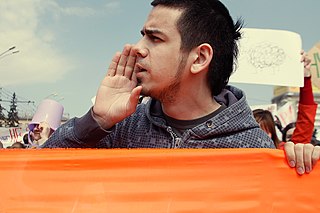
Artyom Aleksandrovich Loskutov is a Russian performance artist and an activist. He is known for an annual Monstration held in Novosibirsk that gently pokes fun at Kremlin policies. He has been arrested for insulting police. In response to the incident he said, "You're not a real Russian until you've been arrested."
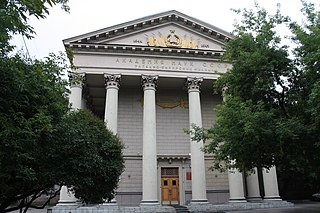
The Institute of Systematics and Ecology of Animals (ISEA) located in Novosibirsk is one of the oldest research organization in the Siberian Branch of the Russian Academy of Sciences. The institute was founded in 1944 as Biomedical Institute, the first Siberian academic establishment working in biology. The Siberian Zoological Museum of the ISEA SB RAS has the third-largest coleopteran collection in Russia. Some Siberian research organizations as the Central Siberian Botanical Garden SB RAS and the Institute of Soil Science and Agricultural Chemistry SB RAS were derived from the Institute former laboratories.
The first known reference to an Art Strike appears in an Alain Jouffroy essay: "What's To Be Done About Art?".
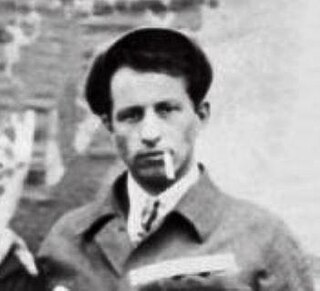
Alexei Vasilievich Voshchakin (1898–1937) was a Soviet artist who worked in Krasnoyarsk and Novosibirsk in the 1920s and 1930s.

